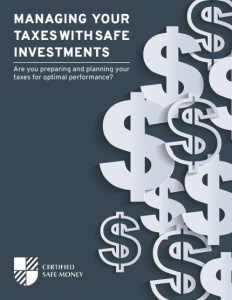Taxable Annuity Gains: Managing Your Tax Liability Effectively
Annuities can be an excellent tool for securing a steady income stream during retirement, but they come with their own set of tax implications that need careful management. Understanding how annuities are taxed and implementing strategies to manage tax liability can help you maximize your investment returns and minimize the amount you owe to the IRS. Here’s a guide on taxable annuity gains and how to manage your tax liability effectively.
Understanding Annuity Taxation
Annuities are tax-deferred investment vehicles, meaning that you do not pay taxes on the earnings until you withdraw the money. However, the taxation of annuity withdrawals depends on several factors, including the type of annuity, the source of funds used to purchase the annuity, and the timing of withdrawals.
Types of Annuities and Their Tax Implications
-
Qualified Annuities:
- Qualified annuities are funded with pre-tax dollars, such as contributions from a traditional IRA or a 401(k) plan. Because these contributions were not taxed initially, all withdrawals from qualified annuities are subject to ordinary income tax rates.
-
Non-Qualified Annuities:
- Non-qualified annuities are purchased with after-tax dollars. Since the principal amount has already been taxed, only the earnings portion of the withdrawals is subject to income tax. The principal is returned tax-free.
How Annuity Earnings are Taxed
When you withdraw money from a non-qualified annuity, the IRS uses the “last in, first out” (LIFO) method to determine the tax treatment of your withdrawals. This means that the earnings are considered to be withdrawn first and are taxed as ordinary income, while the principal is withdrawn last and is not taxed again.
Annuity Withdrawal Strategies
-
Systematic Withdrawals:
- Systematic withdrawals involve taking money out of your annuity on a regular basis, such as monthly or annually. This approach can help you manage your tax liability by spreading out the taxable earnings over multiple years, potentially keeping you in a lower tax bracket.
-
Annuitization:
- Annuitizing your contract converts your annuity into a stream of periodic payments, either for a fixed period or for life. Each payment consists of both principal and earnings. The portion of each payment that represents earnings is taxable, while the portion that represents the return of principal is not.
-
Partial Withdrawals:
- Partial withdrawals allow you to take out some of your money without annuitizing the entire contract. This strategy can help you access funds as needed while managing the tax impact.
Managing Tax Liability with Tax-Efficient Strategies
-
Timing of Withdrawals:
- The timing of your annuity withdrawals can significantly impact your tax liability. Consider delaying withdrawals until you are in a lower tax bracket, such as after retirement when your income may be lower.
-
Roth Conversions:
- If you have a traditional IRA or a 401(k), consider converting some of those funds into a Roth IRA before purchasing an annuity. While you’ll pay taxes on the converted amount, future withdrawals from the Roth IRA annuity can be tax-free, provided certain conditions are met.
-
Use Other Income Sources First:
- To manage tax liability effectively, consider using other income sources, such as Social Security benefits or taxable investment accounts, before tapping into your annuity. This strategy can help you spread out your tax liability and potentially stay in a lower tax bracket.
Avoiding Tax Penalties
-
Early Withdrawal Penalties:
- Withdrawals made before age 59½ are generally subject to a 10% early withdrawal penalty in addition to ordinary income taxes. There are exceptions to this rule, such as in cases of disability or certain medical expenses, but it’s important to plan your withdrawals to avoid unnecessary penalties.
-
Required Minimum Distributions (RMDs):
- For qualified annuities, you must start taking required minimum distributions (RMDs) starting at age 73. Failing to take the required amount can result in significant penalties. Ensure that you understand the RMD rules and plan your withdrawals accordingly.
Estate Planning Considerations
When it comes to estate planning, annuities can play a critical role, but it’s important to understand their tax implications for your heirs. Non-spousal beneficiaries who inherit a non-qualified annuity must pay taxes on the earnings. They can choose to receive the annuity proceeds as a lump sum, over a five-year period, or as an annuitized income stream. Each option has different tax implications, and the choice should be based on the beneficiaries’ financial situation and tax bracket.
Conclusion
Effectively managing taxable annuity gains requires a comprehensive understanding of how annuities are taxed and implementing strategies to minimize your tax liability. By considering the type of annuity, timing your withdrawals carefully, using tax-efficient strategies, and being mindful of potential penalties, you can optimize your annuity’s benefits and ensure a more secure financial future. Always consult with a financial advisor or tax professional to tailor these strategies to your individual circumstances and maximize your financial outcomes.
Contact Information:
Email: devin@ambrosewealth.com
Phone: 5099875559














